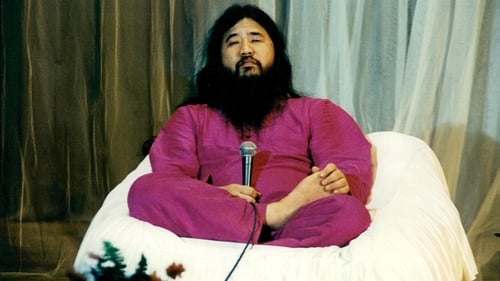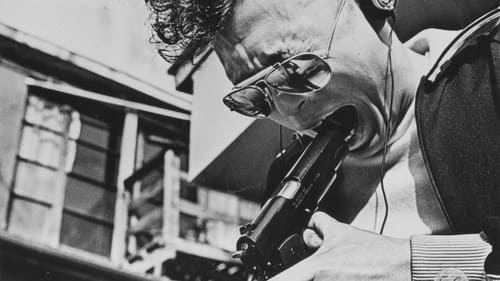Tatsuya Mori
출생 : 1956-05-10, Kure, Hiroshima Prefecture, Japan

Director
일본 관동대지진 당시 수많은 조선인이 학살됐던 역사를 배경으로 한다.

Cinematography
심은경 배우가 주연을 맡아 화제를 모은 영화 "신문기자"의 주인공 모치즈키 이소코 기자의 실제 삶과 취재과정을 따라간다. 모리 타츠야 감독의 뚝심과 집요함이 열혈기자 모치즈키와 만나 일본사회에 대한 비판적 시각과 함께, 개인이 사회와 맺는 관계를 비판적으로 성찰해보기를 제안하는 강렬한 다큐멘터리.

Director
심은경 배우가 주연을 맡아 화제를 모은 영화 "신문기자"의 주인공 모치즈키 이소코 기자의 실제 삶과 취재과정을 따라간다. 모리 타츠야 감독의 뚝심과 집요함이 열혈기자 모치즈키와 만나 일본사회에 대한 비판적 시각과 함께, 개인이 사회와 맺는 관계를 비판적으로 성찰해보기를 제안하는 강렬한 다큐멘터리.

Cinematography
Born to atomic bomb survivors in Hiroshima, Mamoru Samuragochi, a self-taught classical composer with a degenerative condition causing deafness, was celebrated as a "Japanese Beethoven" for the digital age. However, just prior to the 2014 Winter Olympics, where Samuragochi's "Sonatina for Violin" was to accompany figure skater Daisuke Takahashi, part-time university lecturer Takashi Niigaki revealed that he had served as the composer's ghostwriter for 18 years, that Samuragochi couldn't notate music and, in fact, could hear perfectly. As Samuragochi's recordings were pulled and performances cancelled, Niigaki enjoyed success on TV talk shows. Filmmaker Tatsuya Mori finds Samuragochi in his small Yokohama apartment with his wife and cat, ready to tell his side of the story. A mesmerizing character study skewering media duplicity and constructions of ability/disability, in which Samuragochi's career has collapsed, taking fact and fiction with it.

Director
Born to atomic bomb survivors in Hiroshima, Mamoru Samuragochi, a self-taught classical composer with a degenerative condition causing deafness, was celebrated as a "Japanese Beethoven" for the digital age. However, just prior to the 2014 Winter Olympics, where Samuragochi's "Sonatina for Violin" was to accompany figure skater Daisuke Takahashi, part-time university lecturer Takashi Niigaki revealed that he had served as the composer's ghostwriter for 18 years, that Samuragochi couldn't notate music and, in fact, could hear perfectly. As Samuragochi's recordings were pulled and performances cancelled, Niigaki enjoyed success on TV talk shows. Filmmaker Tatsuya Mori finds Samuragochi in his small Yokohama apartment with his wife and cat, ready to tell his side of the story. A mesmerizing character study skewering media duplicity and constructions of ability/disability, in which Samuragochi's career has collapsed, taking fact and fiction with it.

Born to atomic bomb survivors in Hiroshima, Mamoru Samuragochi, a self-taught classical composer with a degenerative condition causing deafness, was celebrated as a "Japanese Beethoven" for the digital age. However, just prior to the 2014 Winter Olympics, where Samuragochi's "Sonatina for Violin" was to accompany figure skater Daisuke Takahashi, part-time university lecturer Takashi Niigaki revealed that he had served as the composer's ghostwriter for 18 years, that Samuragochi couldn't notate music and, in fact, could hear perfectly. As Samuragochi's recordings were pulled and performances cancelled, Niigaki enjoyed success on TV talk shows. Filmmaker Tatsuya Mori finds Samuragochi in his small Yokohama apartment with his wife and cat, ready to tell his side of the story. A mesmerizing character study skewering media duplicity and constructions of ability/disability, in which Samuragochi's career has collapsed, taking fact and fiction with it.

Director
Two weeks after the earthquake, writer and movie director Tatsuya Mori, journalist Takeharu Watai, movie director Yojyu Matsubayashi, and movie producer Takuji Yasuoka, headed for the disaster stricken area, not thinking this film would become a production. "Only to confirm the situation" was their common objective.

Editor
A2 is a continuation of director Tatsuya Mori's film A (1998), an incredible view inside the compound of Japan's Aum Shinrikyo cult after its leaders carried out the deadly sarin gas attacks on the Tokyo subway in 1995. Most followers had no idea that the attacks were being planned, or even that their new religion had violent aspirations. After the attacks, these followers were left to rebuild the religion where they had once found peace in the face of overwhelming, and understandable, condemnation from the rest of Japan. Central focus is placed on Hiroshi Araki, a young man who finds himself elevated to chief spokesman for Aum after its leaders are arrested. Araki faces extreme hostility from the Japanese public, who find it hard to believe that most followers of the cult had no idea of the attacks and even harder to understand why these followers remain devoted to the religion, if not the violence.

Cinematography
A2 is a continuation of director Tatsuya Mori's film A (1998), an incredible view inside the compound of Japan's Aum Shinrikyo cult after its leaders carried out the deadly sarin gas attacks on the Tokyo subway in 1995. Most followers had no idea that the attacks were being planned, or even that their new religion had violent aspirations. After the attacks, these followers were left to rebuild the religion where they had once found peace in the face of overwhelming, and understandable, condemnation from the rest of Japan. Central focus is placed on Hiroshi Araki, a young man who finds himself elevated to chief spokesman for Aum after its leaders are arrested. Araki faces extreme hostility from the Japanese public, who find it hard to believe that most followers of the cult had no idea of the attacks and even harder to understand why these followers remain devoted to the religion, if not the violence.

Director
A2 is a continuation of director Tatsuya Mori's film A (1998), an incredible view inside the compound of Japan's Aum Shinrikyo cult after its leaders carried out the deadly sarin gas attacks on the Tokyo subway in 1995. Most followers had no idea that the attacks were being planned, or even that their new religion had violent aspirations. After the attacks, these followers were left to rebuild the religion where they had once found peace in the face of overwhelming, and understandable, condemnation from the rest of Japan. Central focus is placed on Hiroshi Araki, a young man who finds himself elevated to chief spokesman for Aum after its leaders are arrested. Araki faces extreme hostility from the Japanese public, who find it hard to believe that most followers of the cult had no idea of the attacks and even harder to understand why these followers remain devoted to the religion, if not the violence.

Editor
Roughly chronological, from 3/96 to 11/96, with a coda in spring of 1997: inside compounds of Aum Shinrikyo, a Buddhist sect led by Shoko Asahara. (Members confessed to a murderous sarin attack in the Tokyo subway in 1995.) We see what they eat, where they sleep, and how they respond to media scrutiny, on-going trials, the shrinking of their fortunes, and the criticism of society. Central focus is placed on Hiroshi Araki, a young man who finds himself elevated to chief spokesman for Aum after its leaders are arrested. Araki faces extreme hostility from the Japanese public, who find it hard to believe that most followers of the cult had no idea of the attacks and even harder to understand why these followers remain devoted to the religion, if not the violence.

Cinematography
Roughly chronological, from 3/96 to 11/96, with a coda in spring of 1997: inside compounds of Aum Shinrikyo, a Buddhist sect led by Shoko Asahara. (Members confessed to a murderous sarin attack in the Tokyo subway in 1995.) We see what they eat, where they sleep, and how they respond to media scrutiny, on-going trials, the shrinking of their fortunes, and the criticism of society. Central focus is placed on Hiroshi Araki, a young man who finds himself elevated to chief spokesman for Aum after its leaders are arrested. Araki faces extreme hostility from the Japanese public, who find it hard to believe that most followers of the cult had no idea of the attacks and even harder to understand why these followers remain devoted to the religion, if not the violence.

Director
Roughly chronological, from 3/96 to 11/96, with a coda in spring of 1997: inside compounds of Aum Shinrikyo, a Buddhist sect led by Shoko Asahara. (Members confessed to a murderous sarin attack in the Tokyo subway in 1995.) We see what they eat, where they sleep, and how they respond to media scrutiny, on-going trials, the shrinking of their fortunes, and the criticism of society. Central focus is placed on Hiroshi Araki, a young man who finds himself elevated to chief spokesman for Aum after its leaders are arrested. Araki faces extreme hostility from the Japanese public, who find it hard to believe that most followers of the cult had no idea of the attacks and even harder to understand why these followers remain devoted to the religion, if not the violence.

Detective
Hiroshi Kobayashi is on the run from police who would arrest him for the murder of his girlfriend Naomi. At the same time, he wants revenge on the yakuza member Kimura who got her stuck in drugs. The entire film consists of a long hunting-scene.











